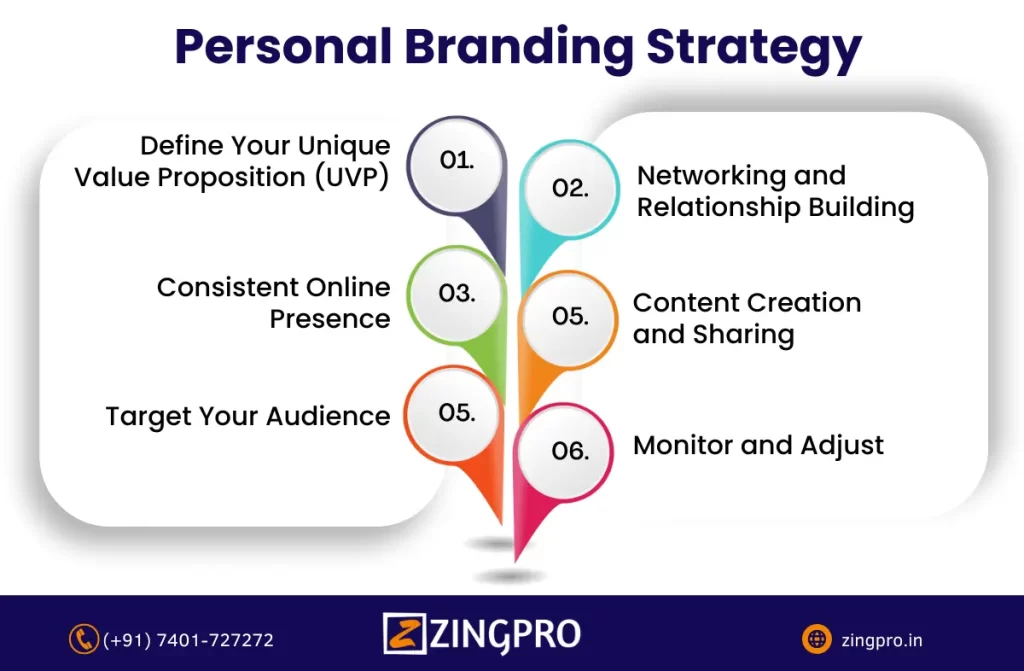In today’s digital age, establishing a strong and authentic connection with your target audience is a fundamental pillar of building a successful personal brand. Whether you’re an entrepreneur, a seasoned professional, or an aspiring influencer, the ability to truly understand and engage your audience is the cornerstone of your personal branding strategy.
In this comprehensive guide, we will delve deep into a range of strategies to help you not only connect with your target audience but also build a meaningful, enduring, and mutually beneficial relationship through your personal branding.

Knowing Your Audience Inside Out
Before embarking on your journey to connect with your target audience, it is crucial to gain a profound understanding of them. This goes beyond surface-level demographics and requires a deep dive into their desires, challenges, aspirations, and pain points. Here’s a step-by-step approach as part of your personal branding strategy.
Conducting surveys, interviews, or focus groups: Gather valuable insights directly from your audience to inform your personal selling for a brand.
Creating detailed audience personas
Develop profiles that encapsulate the various segments of your audience, allowing for more targeted communication in your personal branding strategy.
Exploring social media analytics
Dive into the data to understand your audience’s behavior and preferences, guiding your content creation and engagement strategies within your personal branding strategy.
The more intimately you know your audience, the better equipped you are to tailor your messaging and content in a way that resonates deeply with them within your personal branding strategy.
Speaking Their Language
Connecting with your audience requires speaking their language both figuratively and literally. It’s about not only using words and phrases they understand but also addressing their concerns and interests effectively. Here’s how you can do it within your personal branding strategy.
Use industry-specific terminology and jargon
Adopt the language commonly used in your industry or niche to establish credibility and familiarity within your personal branding strategy.
Craft content that addresses their challenge
Identify and address the specific problems and obstacles your audience faces, positioning yourself as a valuable resource in your personal branding strategy.
Show empathy and offer solutions
Demonstrate a genuine understanding of their pain points and provide practical solutions and guidance as part of your B2B SaaS Demand Generation strategy.
By speaking your audience’s language, you not only showcase your understanding but also exhibit a sincere desire to assist and add value to their lives within your personal branding strategy.
Providing Value Consistently
In a world saturated with information, standing out requires a commitment to providing consistent value to your audience. This value can take various forms within your personal branding strategy.
Educational content
Share insights that teach your audience something new or help them solve a problem relevant to your niche or expertise within your personal branding strategy.
Inspirational content
Uplift and motivate your audience with stories, quotes, or experiences that resonate with their aspirations within your personal branding strategy.
Entertainment
Engage and captivate your audience with content that entertains and sparks their interest as part of your personal branding strategy.
Consistently delivering value positions you as a trusted source of information, inspiration, or entertainment in your audience’s lives through your personal branding strategy.
Leveraging the Power of Storytelling
Human beings are naturally drawn to stories. They create an emotional connection that facts and figures alone cannot achieve within your personal branding strategy. Incorporating storytelling into your personal brand strategy can significantly enhance your connection with your audience.
Share your personal journey and experiences
Narrate your own story, highlighting key moments and challenges that have shaped your personal brand within your personal branding.
Highlight customer or client success stories
Showcase the positive impact of your products or services through real-life examples within your personal branding.
Use anecdotes and narratives
Illustrate key points in your content with relatable stories that resonate with your audience’s experiences within your personal branding strategy.
Storytelling humanizes your brand, making it more relatable and memorable, thereby deepening your connection with your audience through your personal branding.
Engaging Actively and Responsively
Building a meaningful connection with your audience extends beyond content creation; it encompasses active and responsive engagement within your personal branding. Here are some effective engagement strategies.
Schedule Q&A sessions or live chats
Interact directly with your audience, answer their questions, and address their concerns in real-time within your personal branding.
Encourage user-generated content
Foster a sense of community by encouraging your audience to create and share content related to your brand or niche within your personal branding plan.
Acknowledge and appreciate your audience
Show gratitude and recognition for your audience’s contributions, feedback, and support within your personal branding strategy.
Active engagement not only strengthens your bond with your audience but also fosters a sense of belonging and loyalty within your personal branding plan.
Embracing Authenticity and Transparency
In today’s digital landscape, authenticity and transparency are non-negotiable. Being authentic means being open about who you are, what you stand for, and your values. Here’s how to embrace authenticity and transparency within your personal branding.
Share behind-the-scenes moments
Offer glimpses into your personal and professional life, providing a more intimate look at your journey within your personal branding strategy.
Admit mistakes and show growth
When you make errors, acknowledge them and demonstrate how you plan to rectify them or grow from them within your personal branding.
Champion causes and issues
Stand up for causes and issues that align with your values and resonate with your audience, showcasing your commitment to making a positive impact within your personal branding strategy.
Authenticity and transparency build trust, forming the bedrock of strong and lasting connections with your audience through your personal branding strategy.
Measuring and Adapting: personal branding strategy
Connecting with your target audience is an ongoing, dynamic process that requires continuous improvement and adaptation within your personal branding. Here’s how to ensure you’re on the right track.
Utilize analytics tools
Track engagement, reach, conversion rates, and other relevant metrics to assess the impact of your efforts within your personal branding strategy.
Collect direct input
Conduct surveys or feedback forms to gather insights and suggestions directly from your audience within your personal branding.
Regularly assess which content and strategies resonate most with your audience: Adapt your approach based on the data and feedback you collect within your personal branding.
What is a personal branding strategy, and why is it important?
A personal branding strategy is a deliberate plan for shaping and managing your online presence. It’s vital because it distinguishes you, establishes credibility, and aids in goal attainment.
How do I measure the success of my personal branding strategy?
Success metrics may include website traffic, social media engagement, conversion rates, and personal feedback. Regularly analyze these metrics to assess the effectiveness of your strategy.
How can I identify my target audience for my personal branding strategy?
Start by conducting research to understand your ideal audience’s demographics, interests, and pain points. Use surveys, social media insights, and customer personas to pinpoint your target audience.
Conclusion
By understanding your audience deeply, speaking their language, providing consistent value, leveraging storytelling, engaging actively, being authentic and transparent, and continually measuring and adapting, you can forge strong and lasting connections that will propel your personal brand to new heights within your personal branding strategy.
Check out B2B Marketing Automation.

